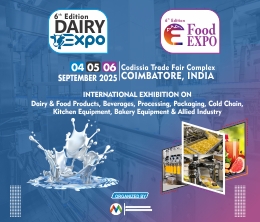Czech Cast & Forged Market (2025-2031) | Share, Companies, Forecast, Growth, Analysis, Trends, Revenue, Size, Industry, Value & Outlook
Market Forecast By Product Types (Light Alloys, Copper Alloys, Iron Casting, Steel Casting, Miscellaneous), By Activity Types (Closed Die Forging, Open Die Forging, Rolled Ring Forging, Cold Forging, Non-ferrous Closed Die Forging), By Applications (Automotive, Aerospace, Oil & Gas, Construction, Agriculture, Industrial, Others) And Competitive Landscape
| Product Code: ETC004180 | Publication Date: Sep 2020 | Updated Date: Feb 2025 | Product Type: Report | |
| Publisher: 6Wresearch | No. of Pages: 70 | No. of Figures: 35 | No. of Tables: 5 | |
Czech Cast & Forged Market Highlights
| Report Name | Czech Cast & Forged Market |
| Forecast period | 2025-2031 |
| CAGR | 5.7% |
| Growing Sector | Automotive |
Topics Covered in the Czech Cast & Forged Market Report
Czech Cast & Forged Market report thoroughly covers the market by product types, by activity types and by applications. The market report provides an unbiased and detailed analysis of the ongoing market trends, opportunities/high growth areas, and market drivers which would help the stakeholders to devise and align their market strategies according to the current and future market dynamics.
Czech Cast & Forged Market Synopsis
Czech Cast & Forged Market has experienced steady growth over recent years, driven by increasing demand from key industries such as automotive, machinery, and construction. The region's strong manufacturing base and advanced production technologies have positioned it as a competitive player in the global market. Investments in innovation and sustainable practices are further bolstering the sector, with companies focusing on high-quality, customized solutions to meet diverse customer needs. Additionally, the rise in exports and collaborations with international partners has significantly contributed to the market's expansion, making it a vital component of the Czech Republic's industrial economy.
According to 6Wresearch, the Czech Cast & Forged Market is projected to grow at a CAGR of 5.7% during the forecast period 2025-2031. This anticipated growth is attributed to the increasing adoption of advanced manufacturing technologies and the rising demand for cast and forged components across industries such as aerospace, construction, and energy. Government initiatives supporting industrial modernization and export-oriented strategies are also expected to play a crucial role in driving the market. Furthermore, the focus on sustainable practices and the development of lightweight, high-strength materials are likely to open new opportunities for market players, ensuring sustained growth during the forecast period.
However, the Czech Cast & Forged Industry faces several challenges that could impact its growth trajectory. One major concern is the volatility in raw material prices, which increases production costs and affects profit margins for manufacturers. Additionally, the sector is grappling with intense competition from global players, particularly from regions with lower labor costs. Another significant challenge is the growing demand for sustainable and environmentally friendly manufacturing practices, which require substantial investment in advanced technologies and infrastructure. Furthermore, skilled labor shortages and the need for continuous upskilling pose hurdles to maintaining productivity and quality standards. Addressing these challenges will be critical for the industry's long-term success and competitiveness on the global stage.
Czech Cast & Forged Market Trends
The Czech cast and forged market is witnessing several emerging trends that are shaping its future trajectory. A prominent trend is the increasing adoption of automation and advanced manufacturing technologies, such as robotics and artificial intelligence, to enhance efficiency and reduce production costs. The push toward sustainability is also driving manufacturers to explore innovative methods, including the use of recycled materials and energy-efficient processes, to align with global environmental standards. Additionally, there is a rising focus on producing high-value, customized components to cater to niche markets like aerospace, automotive, and renewable energy sectors. These trends, combined with efforts to foster collaborations and investment in research and development, are expected to bolster the competitiveness and growth potential of the Czech cast and forged industry in the coming years.
Investment Opportunities in the Czech Cast & Forged Market
Investment opportunities in the Czech cast and forged market are abundant, driven by the sector's dynamic evolution and alignment with global industrial trends. Investors can capitalize on the increasing integration of advanced technologies, such as robotics and AI, which promise to transform manufacturing efficiency and productivity. The industry's shift toward sustainability also presents prospects for investments in eco-friendly innovations, such as recycled materials, energy-efficient processes, and carbon-neutral manufacturing practices. Furthermore, the growing demand for high-value, customized components across industries like automotive, aerospace, and renewable energy opens avenues for specialized manufacturing partnerships and niche market exploration. With government support for industrial modernization and a skilled workforce, the Czech cast and forged market offers a fertile landscape for long-term growth and strategic expansion.
Leading Players in the Czech Cast & Forged Market
Leading players in the Czech cast and forged market include prominent companies that have established themselves through innovation, quality, and adaptability to market demands. Key industry leaders such as ŽĎAS, a.s. and Kovosvit MAS focus on delivering high-quality forged and cast products tailored to automotive and heavy machinery sectors. Other notable firms like Vítkovice Heavy Machinery and UNEX a.s. leverage cutting-edge technologies and robust manufacturing capabilities to cater to diverse industries, including aerospace and renewable energy. These companies emphasize precision engineering, sustainability, and customer-centric approaches, ensuring their competitiveness in both domestic and international markets. Their leadership showcases the sector's strength while fostering collaboration and innovation within the industry.
Government Regulations
Government regulations play a crucial role in shaping the Czech cast and forged market growth, ensuring adherence to quality, safety, and environmental standards. Strict guidelines are in place to regulate emissions, waste management, and energy efficiency, aligning with both national policies and European Union directives. These frameworks incentivize manufacturers to adopt sustainable practices and integrate advanced technologies for cleaner production processes. Additionally, regulations recognizing certifications like ISO 9001 for quality management and ISO 14001 for environmental responsibility foster transparency and trust among stakeholders. By adhering to these standards, the industry mitigates risks, enhances global competitiveness, and supports the broader agenda of sustainable industrial development.
Future Insights of the Czech Cast & Forged Market
The Czech cast and forged market is poised for significant growth, driven by advancements in technology and a strong focus on sustainability. With increasing investments in automation and digitalization, manufacturers are expected to enhance efficiency, reduce costs, and improve product precision, aligning with global trends in Industry 4.0. The push for greener technologies and compliance with stricter environmental regulations will likely foster innovation in cleaner production methods, such as energy-efficient furnaces and waste recycling systems. Expanding collaborations within the European Union and emerging trade opportunities in global markets further bolster the outlook for the industry. By prioritizing sustainability, innovation, and cross-border partnerships, the Czech cast and forged sector is well-positioned to maintain its leadership and meet evolving market demands in the coming years.
Market Segmentation Analysis
The report offers a comprehensive study of the subsequent market segments and their leading categories.
Steel Casting to Dominate the Market-By Product Types
According to Prakhar, Senior Research Analyst, 6Wresearch, Steel casting dominates the product type segment in the Czech cast and forged market due to its exceptional strength, durability, and versatility. Steel castings are extensively used across industries like automotive, construction, and heavy machinery, where high-performance materials are essential. The adaptability of steel to various alloying processes allows manufacturers to meet specific requirements, making it a preferred choice for diverse applications.
Closed Die Forging to Dominate the Market-By Activity Types
Closed die forging leads the activity type category, primarily because of its ability to produce high-precision components with superior mechanical properties. This method minimizes material waste and achieves excellent dimensional accuracy and surface finishes, making it ideal for industries like automotive, aerospace, and industrial machinery. Closed die forging is highly efficient for high-volume production, further cementing its dominance in the segment.
Automotive to Dominate the Market-By Applications
The automotive segment stands out as the largest application segment, driven by the rising demand for lightweight and durable components to improve vehicle efficiency and performance. Components such as crankshafts, gears, and suspension parts are predominantly manufactured through casting and forging processes, given their ability to meet stringent safety and quality standards. The Czech Republic's strong automotive manufacturing base further reinforces this segment's leadership in the market.
Key Attractiveness of the Report
- 10 Years of Market Numbers.
- Historical Data Starting from 2021 to 2024
- Base Year: 2024
- Forecast Data until 2031.
- Key Performance Indicators Impacting the market.
- Major Upcoming Developments and Projects.
Key Highlights of the Report:
- Czech Cast & Forged Market Overview
- Czech Cast & Forged Market Outlook
- Market Size of Czech Cast & Forged Market, 2024
- Forecast of Czech Cast & Forged Market, 2031
- Historical Data and Forecast of Czech Cast & Forged Revenues & Volume for the Period 2021-2031
- Czech Cast & Forged Market Trend Evolution
- Czech Cast & Forged Market Drivers and Challenges
- Czech Cast & Forged Price Trends
- Czech Cast & Forged Porter's Five Forces
- Czech Cast & Forged Industry Life Cycle
- Historical Data and Forecast of Czech Cast & Forged Market Revenues & Volume By Product Types for the Period 2021-2031
- Historical Data and Forecast of Czech Cast & Forged Market Revenues & Volume By Light Alloys for the Period 2021-2031
- Historical Data and Forecast of Czech Cast & Forged Market Revenues & Volume By Copper Alloys for the Period 2021-2031
- Historical Data and Forecast of Czech Cast & Forged Market Revenues & Volume By Iron Casting for the Period 2021-2031
- Historical Data and Forecast of Czech Cast & Forged Market Revenues & Volume By Steel Casting for the Period 2021-2031
- Historical Data and Forecast of Czech Cast & Forged Market Revenues & Volume By Miscellaneous for the Period 2021-2031
- Historical Data and Forecast of Czech Cast & Forged Market Revenues & Volume By Activity Types for the Period 2021-2031
- Historical Data and Forecast of Czech Cast & Forged Market Revenues & Volume By Closed Die Forging for the Period 2021-2031
- Historical Data and Forecast of Czech Cast & Forged Market Revenues & Volume By Open Die Forging for the Period 2021-2031
- Historical Data and Forecast of Czech Cast & Forged Market Revenues & Volume By Rolled Ring Forging for the Period 2021-2031
- Historical Data and Forecast of Czech Cast & Forged Market Revenues & Volume By Cold Forging for the Period 2021-2031
- Historical Data and Forecast of Czech Cast & Forged Market Revenues & Volume By Non-ferrous Closed Die Forging for the Period 2021-2031
- Historical Data and Forecast of Czech Cast & Forged Market Revenues & Volume By Applications for the Period 2021-2031
- Historical Data and Forecast of Czech Cast & Forged Market Revenues & Volume By Automotive for the Period 2021-2031
- Historical Data and Forecast of Czech Cast & Forged Market Revenues & Volume By Aerospace for the Period 2021-2031
- Historical Data and Forecast of Czech Cast & Forged Market Revenues & Volume By Oil & Gas for the Period 2021-2031
- Historical Data and Forecast of Czech Cast & Forged Market Revenues & Volume By Construction for the Period 2021-2031
- Historical Data and Forecast of Czech Cast & Forged Market Revenues & Volume By Agriculture for the Period 2021-2031
- Historical Data and Forecast of Czech Cast & Forged Market Revenues & Volume By Industrial for the Period 2021-2031
- Historical Data and Forecast of Czech Cast & Forged Market Revenues & Volume By Others for the Period 2021-2031
- Czech Cast & Forged Import Export Trade Statistics
- Market Opportunity Assessment By Product Types
- Market Opportunity Assessment By Activity Types
- Market Opportunity Assessment By Applications
- Czech Cast & Forged Top Companies Market Share
- Czech Cast & Forged Competitive Benchmarking By Technical and Operational Parameters
- Czech Cast & Forged Company Profiles
- Czech Cast & Forged Key Strategic Recommendations
Markets Covered
The report provides a detailed analysis of the following market segments:
By Product Types
- Light Alloys
- Copper Alloys
- Iron Casting
- Steel Casting
- Miscellaneous
By Activity Types
- Closed Die Forging
- Open Die Forging
- Rolled Ring Forging
- Cold Forging
- Non-ferrous Closed Die Forging
By Applications
- Automotive
- Aerospace
- Oil & Gas
- Construction
- Agriculture
- Industrial
- Others
Czech Cast & Forged Market (2025-2031): FAQs
| Table of Contents |
| 1. Executive Summary |
| 2. Introduction |
| 2.1. Key Highlights of the Report |
| 2.2. Report Description |
| 2.3. Market Scope & Segmentation |
| 2.4. Research Methodology |
| 2.5. Assumptions |
| 3. Czech Cast & Forged Market Overview |
| 3.1. Czech Country Macro Economic Indicators |
| 3.2. Czech Cast & Forged Market Revenues & Volume, 2021 & 2031F |
| 3.3. Czech Cast & Forged Market - Industry Life Cycle |
| 3.4. Czech Cast & Forged Market - Porter's Five Forces |
| 3.5. Czech Cast & Forged Market Revenues & Volume Share, By Product Types, 2021 & 2031F |
| 3.6. Czech Cast & Forged Market Revenues & Volume Share, By Activity Types, 2021 & 2031F |
| 3.7. Czech Cast & Forged Market Revenues & Volume Share, By Applications, 2021 & 2031F |
| 4. Czech Cast & Forged Market Dynamics |
| 4.1. Impact Analysis |
| 4.2. Market Drivers |
| 4.3. Market Restraints |
| 5. Czech Cast & Forged Market Trends |
| 6. Czech Cast & Forged Market, By Types |
| 6.1. Czech Cast & Forged Market, By Product Types |
| 6.1.1 Overview and Analysis |
| 6.1.2. Czech Cast & Forged Market Revenues & Volume, By Product Types, 2021 - 2031F |
| 6.1.3. Czech Cast & Forged Market Revenues & Volume, By Light Alloys, 2021 - 2031F |
| 6.1.4. Czech Cast & Forged Market Revenues & Volume, By Copper Alloys, 2021 - 2031F |
| 6.1.5. Czech Cast & Forged Market Revenues & Volume, By Iron Casting, 2021 - 2031F |
| 6.1.6. Czech Cast & Forged Market Revenues & Volume, By Steel Casting, 2021 - 2031F |
| 6.1.7. Czech Cast & Forged Market Revenues & Volume, By Miscellaneous, 2021 - 2031F |
| 6.2. Czech Cast & Forged Market, By Activity Types |
| 6.2.1. Overview and Analysis |
| 6.2.2. Czech Cast & Forged Market Revenues & Volume, By Closed Die Forging, 2021 - 2031F |
| 6.2.3. Czech Cast & Forged Market Revenues & Volume, By Open Die Forging, 2021 - 2031F |
| 6.2.4. Czech Cast & Forged Market Revenues & Volume, By Rolled Ring Forging, 2021 - 2031F |
| 6.2.5. Czech Cast & Forged Market Revenues & Volume, By Cold Forging, 2021 - 2031F |
| 6.2.6. Czech Cast & Forged Market Revenues & Volume, By Non-ferrous Closed Die Forging, 2021 - 2031F |
| 6.3. Czech Cast & Forged Market, By Applications |
| 6.3.1. Overview and Analysis |
| 6.3.2. Czech Cast & Forged Market Revenues & Volume, By Automotive, 2021 - 2031F |
| 6.3.3 Czech Cast & Forged Market Revenues & Volume, By Aerospace, 2021 - 2031F |
| 6.3.4. Czech Cast & Forged Market Revenues & Volume, By Oil & Gas, 2021 - 2031F |
| 6.3.5. Czech Cast & Forged Market Revenues & Volume, By Construction, 2021 - 2031F |
| 6.3.6. Czech Cast & Forged Market Revenues & Volume, By Agriculture, 2021 - 2031F |
| 6.3.7. Czech Cast & Forged Market Revenues & Volume, By Industrial, 2021 - 2031F |
| 7. Czech Cast & Forged Market Import-Export Trade Statistics |
| 7.1. Czech Cast & Forged Market Export to Major Countries |
| 7.2. Czech Cast & Forged Market Imports from Major Countries |
| 8. Czech Cast & Forged Market Key Performance Indicators |
| 9. Czech Cast & Forged Market - Opportunity Assessment |
| 9.1. Czech Cast & Forged Market Opportunity Assessment, By Product Types, 2021 & 2031F |
| 9.2. Czech Cast & Forged Market Opportunity Assessment, By Activity Types, 2021 & 2031F |
| 9.3. Czech Cast & Forged Market Opportunity Assessment, By Applications, 2021 & 2031F |
| 10. Czech Cast & Forged Market - Competitive Landscape |
| 10.1. Czech Cast & Forged Market Revenue Share, By Companies, 2024 |
| 10.2. Czech Cast & Forged Market Competitive Benchmarking, By Operating and Technical Parameters |
| 11. Company Profiles |
| 12. Recommendations |
| 13. Disclaimer |
- Single User License$ 1,995
- Department License$ 2,400
- Site License$ 3,120
- Global License$ 3,795
Search
Related Reports
- Vietnam Twisted Pair Cables Market (2024-2030) | Size & Revenue, Forecast, Share, Companies, Competitive Landscape, Analysis, Trends, Value, Segmentation, Outlook, Industry, Growth
- South Africa B2B Cleaning Market (2025-2031) | Size & Revenue, Forecast, Share, Companies, Competitive Landscape, Analysis, Trends, Value, Segmentation, Outlook, Industry, Growth
- Mexico Dispersion Market (2025-2031) | Industry, Size, Growth, Revenue, Value, Companies, Forecast, Analysis, Share & Trends
- United States Video Conferencing Market (2025-2031) | Outlook, Industry, Size, Revenue, Share, Trends, Forecast, Growth, Companies, Analysis & Value
- Australia Electric Motor Market (2025-2031) | Trends, Share, Size, Value, Revenue, Industry, Growth, Analysis, Segmentation & Outlook
- Italy Textile Auxiliaries Market (2025-2031) | Outlook, Value, Companies, Share, Industry, Growth, Trends, Revenue, Forecast, Analysis & Size
- Tajikistan Diesel Genset (Generator) Market (2025-2031) | Value, Industry, Forecast, Revenue, Trends, Outlook, Share, Size, Companies, Growth & Analysis
- China Diesel Genset (Generator) Market (2025-2031) | Growth, Size, Trends, Industry, Value, Share, Analysis, Revenue, Segmentation & Outlook
- China Low Voltage Electric Motor Market (2025-2031) | Analysis, Size, Share, Trends, Growth, Revenue, industry, Forecast, Outlook & Segmentation
- Thailand Low Voltage Electric Motor Market (2025-2031) | Outlook, Revenue, Share, Value, Industry, Growth, Trends, Forecast, Analysis, Size & Companies
Industry Events and Analyst Meet
Our Clients
Whitepaper
- Middle East & Africa Commercial Security Market Click here to view more.
- Middle East & Africa Fire Safety Systems & Equipment Market Click here to view more.
- GCC Drone Market Click here to view more.
- Middle East Lighting Fixture Market Click here to view more.
- GCC Physical & Perimeter Security Market Click here to view more.
6WResearch In News
- India's Printer Market Faces 20.7% Decline in Q4 2023: Epson and HP Lead Amidst Downturn
- India's Camera Market Sees 8.9% Decline in Q4 2023; Canon Leads with 38.4% Share
- Doha a strategic location for EV manufacturing hub: IPA Qatar
- Demand for luxury TVs surging in the GCC, says Samsung
- Empowering Growth: The Thriving Journey of Bangladesh’s Cable Industry
- The future of gaming industry in the Philippines













